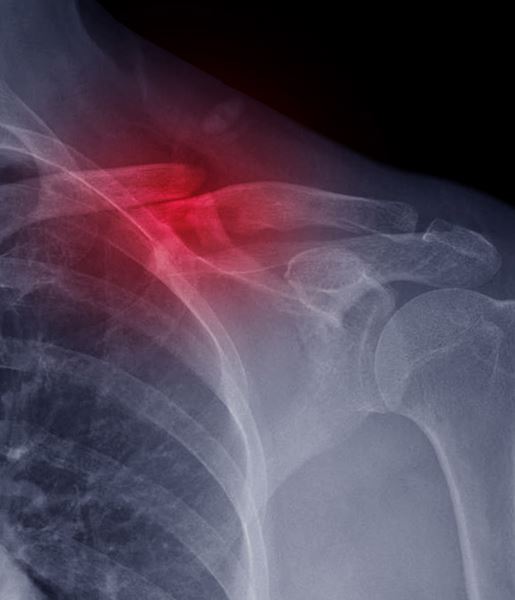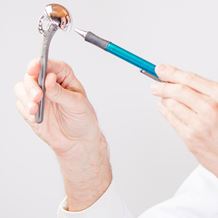Shoulder Fracture
- Home
- Services
- Orthopaedics
- Shoulder Orthopaedics
- Common Shoulder Conditions
- Shoulder Fracture
What is shoulder fracture?
A shoulder fracture is a very common condition and usually occurs as a result of accident or injury, usually through playing sport or a traffic collision. The shoulder joint is made up of three bones that are vulnerable to breaking: the collarbone (clavicle), shoulder blade (scapula) or upper arm bone (humerus). Breaking any one of these bones can cause severe shoulder pain, swelling and limited movement.
The shoulder blade is less likely to be fractured as it is protected by the chest muscles, and this type of shoulder fracture is usually associated with severe trauma and chest damage. The collarbone can fracture at any age and is often accompanied by bruising, swelling and a bump over the injury. This bump is either a localised swelling, or part of the broken bone. Fracturing the top of the arm bone is more common with age and osteoporosis.
How is it treated?
Shoulder fractures can often be treated without surgical intervention, particularly when all the bones are still in place (non-displaced fracture). If the broken bones have separated (displaced fracture) and are no longer in their correct anatomical position, or have broken through the skin, your doctor may recommend surgery as the best option for healing. Diagnosis of your shoulder fracture can be confirmed by X-ray and a physical examination. Treatment commonly involves immobilisation, pain medication and ice. If surgery is necessary, the shoulder fracture can be repaired using plates, screws or pins. In some cases, a total shoulder replacement may be recommended to restore function and mobility to the shoulder joint.
How long does it last?
As most shoulder injuries require a period of immobilisation and possibly rehabilitation, there can be quite an impact on daily life. In less severe cases, improvement can be fairly rapid with a return to activities once the bones have healed and your range of motion has restored. With more serious injury, there may be additional soft tissue damage to consider in which case the recovery period will be longer.

Shoulder replacement approaches
Find a hospital with orthopaedic services
Our Hospitals



